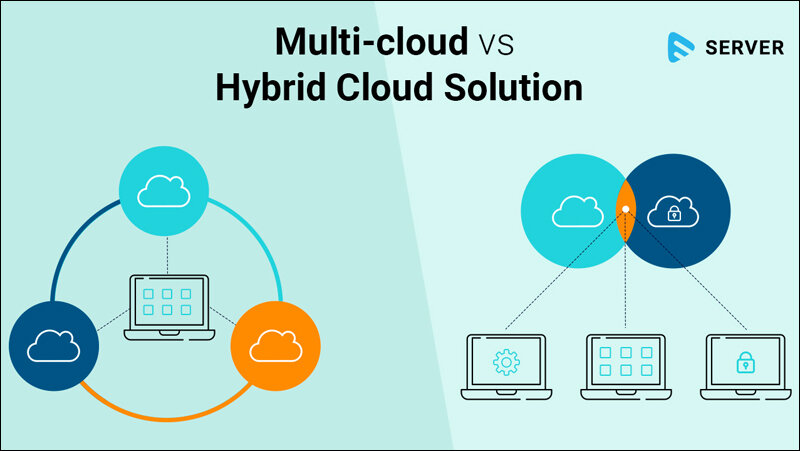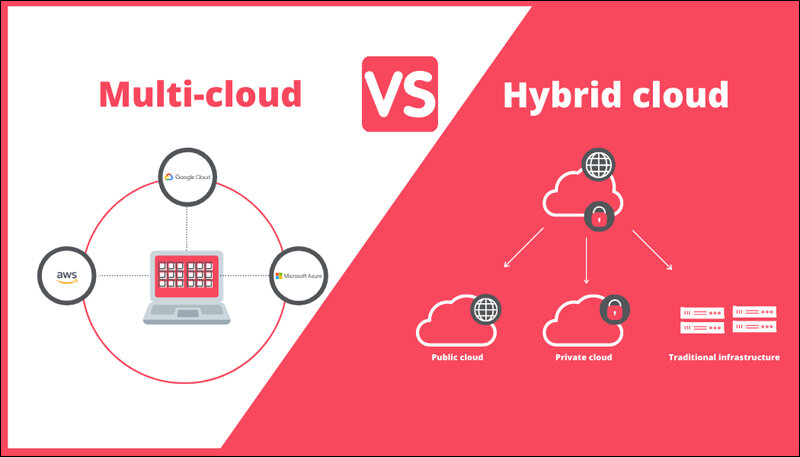Dinesh Elumalai explains which cloud model has the strategic advantage for businesses in the competitive space of the digital age.
With the rise of cloud computing, organizations are faced with the challenge of deciding whether to go with a hybrid or adopt a multi-cloud strategy. Each offers certain features and specific requirements making the choice a difficult one. In this analysis, we explore how a good cloud strategy can reduce costs, along with other benefits.
The terms ‘hybrid cloud’ and ‘multi cloud’ both refer to cloud models that use multiple clouds. However, the infrastructure of the two differs.
A hybrid cloud combines two or more types of clouds, while a multi cloud combines multiple clouds of the same type. To put things into perspective: A hybrid cloud is the result of combining oranges and lemons, whereas a multi cloud is the result of combining different types of oranges.

Let us take a closer look at the two clouds and discuss why businesses might prefer one model over the other.
What does the term ‘multi cloud’ mean?
The term ‘multi cloud’ describes the joining and fusing of various public clouds. For instance, a business might use Google Cloud for user authentication, PaaS with Microsoft Azure, and AWS as a database.
Many businesses unintentionally adopt a multi-cloud deployment model, for instance when various departments use various public cloud service providers for various tasks. This may be the case because they believe that one cloud vendor excels in one area, such as SaaS, while another excels in a different area.
A hybrid cloud: what is it?
In a hybrid cloud, a business combines one or more public cloud services with its own private cloud infrastructure, such as a data centre. Hybrid cloud networks are common, and some businesses migrate partially to the cloud before deciding it is more cost-effective to keep some processes on-premises, such as data storage.
Hybrid clouds can give companies more control while utilising public cloud computing’s larger resources and lower overhead costs.

Which cloud deployment model should businesses use?

Finding the best cloud deployment typically depends on a few things, including:
Security: Companies in industries with strict regulations, like healthcare or finance, may opt for a hybrid cloud model that enables them to keep some of their data in a private cloud. But doing so needs a significant investment in cybersecurity. Given that cloud vendors have more resources at their disposal than individual companies do for data protection, data for most businesses may be more secure in the public cloud.
Performance: Companies can improve performance by reducing latency by using public clouds to host servers at the network edge.
Reliability: When running code in an on-premises private cloud, hybrid cloud apps may use on-premises data centres, but they may switch to the public cloud as demand rises, that is, when their on-site hardware can no longer handle it. When usage is high, this strategy can assist in keeping systems operational.
Cost: With a cloud vendor running the data centre, setting up the servers, and performing security updates, public clouds typically have lower operating costs and less direct management. When many businesses are deciding whether they want to be in a fully public cloud-based environment or a multi-cloud one, this relieves them of the time and financial burden. Additionally, moving all operations completely to the cloud takes time and money, which may force some businesses to operate in a hybrid cloud environment for a while.
Vendor lock in: To get the best (or most economical package) of each provider’s services and avoid being tied to any one provider, many businesses opt for a multi-cloud strategy.

Businesses must think carefully about how to allocate their resources when implementing a multi-cloud or hybrid cloud strategy. They must also make sure they have qualified staff to manage those resources in various settings, including both on-site and in the public cloud.
Multi- and hybrid-cloud deployment
Companies are now aware that, rather than relying solely on one cloud platform or architecture, data management necessitates combining several suitable cloud deployment solutions. In 2023, many businesses will try to install hybrid or multi-cloud with more than one vendor to get the most out of each solution.
A hybrid cloud architecture combines public and private clouds tailored to a specific industry, such as insurance, banking, etc., whose data is their primary source of revenue. As a result, Multi and Hybrid Cloud Deployment will become one of the most well-liked trends in cloud computing.
Conclusion
The cloud has the power to completely transform every sector of business, not just the government. Furthermore, the cloud presents amazing opportunities for developing India’s healthcare and educational sectors.
A thorough national cloud policy will need to be developed to guarantee that the country gains the most benefits from the cloud while minimising risks. Fundamentally, the government must play a significant role in ensuring that Indian organisations can profit from the cloud revolution for economic growth without being constrained by its challenges and risks.
Many believe that cloud computing will be the upcoming major advancement in information technology for consumers, companies, and the government.









